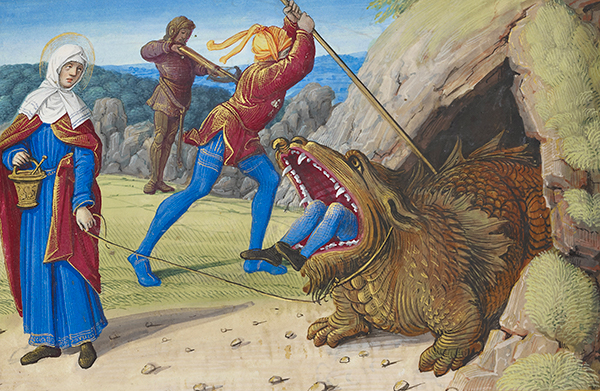Dane Redman believes there is one thing that ties nearly every culture together — the presence of the dragon.
Redman, an advertising senior who studied anthropology, said human’s fear of snakes points to the existence of a collective imagination that transcends race, nationality and creed in the collective symbol of the dragon.
The Morgan Library and Museum’s collection of illuminated manuscripts depicting the monstrous, both known and unknown, are just some of the works students can expect to see at “Medieval Monsters: Terrors, Aliens, Wonders,” a new exhibit on display at the ‘Blanton Museum of Art beginning Oct. 27.
“What we consider monstrous and what has been considered monstrous in the past certainly have consequences in our world today,” said Holly Borham, assistant curator of prints and drawings.
Monsters in the medieval world served a variety of purposes. Sea monsters warned away sailors from valuable fishing areas, dragons symbolized the strength of states and sirens demonized female sexuality. Artists of the time also sought to dehumanize other populations, depicting Jews and Muslims as monstrous.
Louis Waldman, associate professor of art history, said monsters in art represent the tensions or happenings of the period in which they were created.
“One of the arguments of this (exhibit) is that monsters are not just these things that exist out in the abstract to scare you,” Waldman said. “They have meaning, they symbolize power, (and) they exist in religious context right alongside sacred images.”
Most of the works in the collection appear in illuminated manuscripts, books that recorded religious texts and prayers with hand-painted illustrations and decorations. Commissioned by nobility, these manuscripts displayed the wealth of its patron with gold and silver gilding.
With the exhibition, Borham will also showcase the pigments and tools that were used to create the manuscripts. While workshops used local materials such as sheep skins for parchment, they also imported pigments from around the known world.
“The lapis lazuli stone, which when you grind it is called ultra marine, comes from Afghanistan,” Borham said. “These manuscripts are very global and without global trade, they wouldn’t look the way they do.”
Another kind of manuscript, called bestiaries, acted as natural encyclopedias that depicted real animals and imaginary beasts side by side. For the average medieval person, the unicorn and the elephant both existed in the realm of possibilities of animals beyond Europe.
“Each one of these animals (in the bestiary) had a divine lesson from God that was teaching you about an attribute of his,” Borham said. “Like the story that lion cubs are born dead and their parents lick them and blow breath on them and after three days they come to life. That is an allegory of Christ, so that’s a mixture of truth and fiction and a religious idea all in one.”
The tension between human and monster, imagination and science, sacred and hellish that existed throughout history are evident in each piece of the exhibit. The monster draws upon societal fears of the natural world, of divine justice and illustrates people’s fear of one another.
“People are always among the most frightening monsters,” Waldman said. “In the minds of any society, we often project our fear of other people onto these fictive imaginary shapes and embody our fear of people.”















